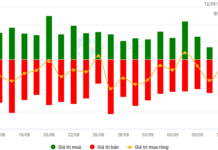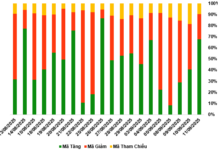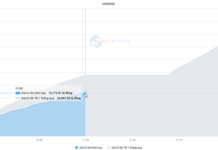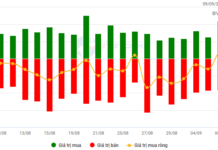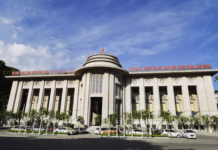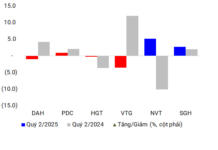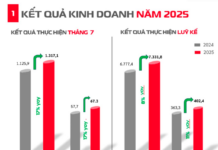Reporter: The Amended Power Law, which will come into effect on February 1, 2025, introduces new provisions on electricity pricing. Could you elaborate on these changes, Mr. Hòa?
– Mr. TRẦN VIỆT HÒA, Director of the Electricity Regulatory Authority – Ministry of Industry and Trade: The electricity pricing policy in the Amended Power Law has institutionalized Resolution 55-NQ/TW of 2020 by the Party Central Committee on energy development orientation until 2030, with a vision towards 2045. It also legalizes the regulation of electricity prices by stipulating a mechanism for adjusting the average electricity selling price, changing it from a “Decision by the Prime Minister,” as stated in the current Power Law, to a “Decree by the Government.”

The Amended Power Law stipulates that retail electricity prices should be adjusted promptly to reflect the actual fluctuations in input parameters. It also accounts for reasonable and legitimate costs, along with appropriate profits, to preserve and develop the business capital of enterprises. These adjustments are made while considering socio-economic conditions and the level of competition in the electricity market. The law delegates the Government to issue detailed regulations to ensure flexibility in implementation.
By delegating the Government as mentioned above, we can both closely follow market fluctuations in adjusting retail electricity prices and ensure unity in macroeconomic management (as electricity prices are a factor that affects the macroeconomy) and other economic and social balances.
Additionally, the Government’s Decree will provide more specific regulations on matters such as reasonable profits and electricity price adjustment timelines, thereby creating a legal basis for practical implementation.
Many people have long been concerned about electricity prices only increasing and not decreasing. With the new pricing mechanism under the Amended Power Law, can electricity prices be reduced?
– The current Power Law stipulates that electricity prices should follow a market mechanism with state regulation, aligning with the level of development of the power industry and the mechanism for adjusting the average electricity selling price, as specified in Decision 05/2024/QĐ-TTg by the Prime Minister (replacing Decision 24/2017/QĐ-TTg).
Electricity price adjustments are considered based on objective fluctuations in input parameters across the electricity production and supply chain, other costs not yet included in electricity prices, and profits on owner’s equity directly serving the production and supply of electricity by the Vietnam Electricity Group (EVN).

Hanoi Electricity Corporation staff performing maintenance and repair of the electricity system. Photo: LÊ THÚY
Accordingly, when the average electricity selling price decreases by 1% or more or increases by less than 5% compared to the current price, EVN is authorized to make adjustments. If the increase is between 5% and 10%, the Ministry of Industry and Trade will provide its opinion for EVN to implement the adjustment. For increases of 10% or more or those affecting the macroeconomy, the Ministry of Industry and Trade will report to the Prime Minister for consideration and guidance.
With the new provisions in the Amended Power Law, retail electricity prices will be adjusted promptly to reflect actual fluctuations in input parameters. Can you elaborate on how this affirms the policy of gradually aligning electricity pricing with market dynamics?
As per the current regulations, electricity prices can increase or decrease, depending on the fluctuations in input parameters. However, electricity price management is just one link in the Government and Prime Minister’s overall macroeconomic management. Therefore, at certain times, to ensure macroeconomic stability and other balances, the Prime Minister has directed to maintain stable electricity prices, resulting in electricity prices not fully reflecting cost fluctuations (showing an increasing trend compared to the previous period).
With the new provisions in the Amended Power Law, retail electricity prices will be adjusted promptly to reflect actual fluctuations in input parameters. This reaffirms the policy of gradually aligning electricity pricing with market dynamics.
In the future, the Government will issue a decree to replace Decision 05/2024/QĐ-TTg on the mechanism for adjusting the average electricity selling price to enhance the practicality of electricity price management. The fluctuations in input parameters, such as fuel prices, electricity output structure, and foreign exchange rates, will then influence the increase or decrease in the average electricity selling price.
Mr. Hòa, to regulate electricity prices according to market mechanisms, is it necessary to accelerate the development of a competitive retail electricity market?
– Building and developing a competitive electricity market, in general, and a competitive retail electricity market, in particular, is one of the Party and Government’s important policies.
According to Decision 63/2013/QĐ-TTg, when the necessary conditions are met, Vietnam has been gradually implementing the electricity market competition by levels. We are currently in the stage of a competitive wholesale electricity market. Transitioning to a competitive retail electricity market is a complex process that requires thorough preparation in various aspects and the fulfillment of prerequisite conditions.
Although the electricity generation and wholesale market has been operating for more than 12 years, the level of competition remains limited. To transition to the competitive retail electricity market stage, it is essential to address core and critical issues such as restructuring the electricity industry, reforming retail electricity prices (eliminating cross-subsidization), separating the distribution and retail functions, and developing the necessary infrastructure.
With the recently passed Amended Power Law and Vietnam’s potential challenges in maintaining a balance between electricity supply and demand in the coming years, it is necessary to review and adjust the roadmap for developing a competitive electricity market, in general, and a competitive retail electricity market, in particular, to ensure feasibility and effectiveness.
One step towards a competitive retail electricity market was the Government’s issuance of Decree 80 on the mechanism for direct electricity purchase between renewable energy generators and large electricity users. However, in reality, many customers are still unable to purchase electricity directly. Could you explain this discrepancy?
– Allowing large electricity users to enter into direct power purchase agreements (DPPAs) with renewable energy generators is a novel and significant initiative in Vietnam.
DPPAs have garnered significant interest from organizations and individuals, who eagerly awaited their early implementation by the Government. While the potential and demand for participating in this mechanism are substantial, several challenges remain, including the need for adaptation to its novelty, agreement and contract terms, costs, insufficient supply to meet immediate demand, and financial constraints.
The Electricity Regulatory Authority has advised the Ministry of Industry and Trade to vigorously direct EVN, the National Power Transmission Corporation (NPTC), and relevant units to promptly finalize and announce related matters. These include participation costs (for using the electricity system and settlement of differences), amendments and issuance of business and internal procedures, and the development of a governance process for registration, confirmation, data reconciliation, and calculation of settlements for electricity volumes traded under this mechanism.
The Ministry of Industry and Trade will continue to review, refine, and promptly submit to the competent authorities other necessary regulations to enhance the efficiency of DPPAs. The successful implementation of this mechanism requires close coordination between government agencies, businesses, and the public.
Review and propose adjustments to Power Planning VIII
According to Mr. Hòa, the demand for green and clean electricity through the DPPA mechanism is increasing. However, the current supply cannot meet this demand as the scale of rooftop solar power has reached the limit set by Power Planning VIII for the self-consumption rooftop solar power model (2,600 MW). Meanwhile, large-scale renewable energy projects require time to develop.
In the past, the Ministry of Industry and Trade has directed its units to review, evaluate, and propose adjustments to Power Planning VIII. These adjustments aim to promptly supplement the development goals for renewable energy, especially rooftop solar power, to increase the potential for participation in DPPAs, particularly those following the dedicated connection line model.

